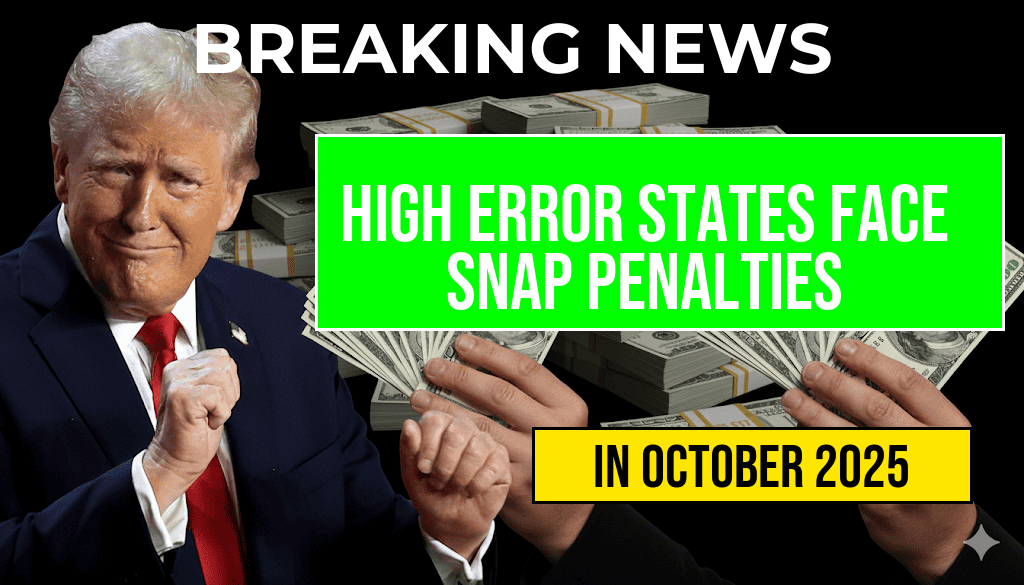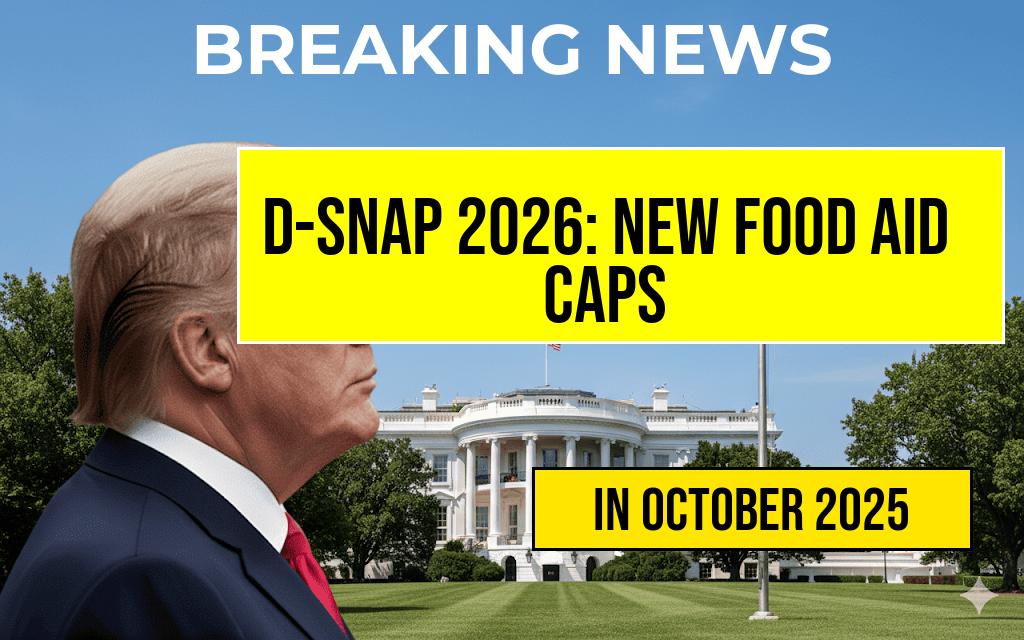New data reveals that several states face significant financial repercussions due to high error rates in the Supplemental Nutrition Assistance Program (SNAP). The U.S. Department of Agriculture (USDA) has implemented stringent penalties for states that exceed the allowable error rate, which could result in millions of dollars in costs. The penalties arise from improper payments made to beneficiaries, raising concerns about whether these states will reduce benefits or implement cuts to manage their budgets. As states grapple with these challenges, the potential impact on low-income families who rely on SNAP for food assistance could be profound.
Understanding SNAP and Error Rates
The Supplemental Nutrition Assistance Program is a vital federal assistance program aimed at alleviating hunger among low-income households. Eligibility and benefit amounts are determined based on various factors, including income, household size, and expenses. However, the program is not without its challenges; states must navigate complex regulations to ensure accurate disbursement of funds.
What Are SNAP Error Rates?
SNAP error rates reflect the percentage of payments that are deemed improper due to ineligibility or incorrect benefit amounts. The USDA sets annual targets for these error rates, and states that exceed these thresholds face financial penalties. This year, several states have reported error rates significantly above the national average, prompting the USDA to scrutinize their SNAP administration practices closely.
High-Error States Face Significant Penalties
States like California, Texas, and Florida have been identified as having particularly high error rates. According to USDA data, the penalties can range from a few hundred thousand to several million dollars, depending on the severity of the error rates. These funds are deducted from the federal reimbursements that states receive for administering SNAP.
| State | Error Rate (%) | Estimated Penalty ($) |
|---|---|---|
| California | 10.5 | $4,000,000 |
| Texas | 9.8 | $3,500,000 |
| Florida | 8.9 | $2,800,000 |
Potential Impact on Benefits
The financial strain caused by these penalties raises critical questions about the future of SNAP benefits in high-error states. With states facing budget constraints, there is growing apprehension that they may consider reducing benefits to offset the loss from penalties. This potential reduction could affect millions of families who rely on SNAP for nutritious food.
State Responses and Remedies
In response to the USDA’s penalties, affected states are taking various measures to address the high error rates. Some are investing in enhanced training for staff, while others are implementing new technology to improve data accuracy and streamline application processes. For example, California has initiated a pilot program aimed at improving the accuracy of eligibility determinations.
- Training Programs: Enhanced training sessions for employees handling SNAP applications.
- Technology Upgrades: Investing in software to better track applicant data and eligibility.
- Public Awareness Campaigns: Educating beneficiaries about documentation requirements to ensure better compliance.
The Broader Context
The high error rates and subsequent penalties come at a time when food insecurity remains a pressing issue across the United States. According to the Feeding America, millions of Americans experience food scarcity, making the role of programs like SNAP critically important. As states work to rectify their error rates, the balance between compliance and assistance remains paramount.
Looking Ahead
As discussions continue regarding SNAP’s future amidst these penalties, stakeholders from various sectors—including government officials, advocacy groups, and beneficiaries—are urging for solutions that prioritize food security while ensuring program integrity. The upcoming months will be crucial as states implement necessary changes and work with the USDA to better manage SNAP, with the hope of minimizing disruptions to the benefits that millions depend on.
For more information on SNAP and its regulations, visit the USDA Food and Nutrition Service.
Frequently Asked Questions
What is the SNAP error-rate penalty?
The SNAP error-rate penalty is a financial consequence imposed on states that have high rates of errors in administering the Supplemental Nutrition Assistance Program (SNAP). If a state’s error rate exceeds the federal threshold, it may face sanctions that can lead to a reduction in federal funding.
How do high-error states affect SNAP benefits?
High-error states may see a decrease in their SNAP benefits due to the error-rate penalty. When penalties are applied, states might have to cut back on benefits or services to manage the financial impact, potentially affecting those in need.
What causes high error rates in SNAP programs?
High error rates in SNAP can be attributed to various factors, including inadequate training for staff, systematic issues in processing applications, and challenges in verifying applicant information. These issues lead to incorrect benefit calculations and eligibility determinations.
Are there any measures being taken to reduce error rates?
Yes, many states are implementing new training programs for staff and adopting better technology solutions to improve the accuracy of SNAP administration. These measures aim to minimize errors and avoid the financial penalties associated with high error rates.
What should beneficiaries know about potential changes to their benefits?
Beneficiaries should stay informed about any potential changes to their SNAP benefits as states address error rates. It’s essential to keep in contact with local SNAP offices for updates and to ensure that their information is accurate to prevent any disruptions in benefits.








